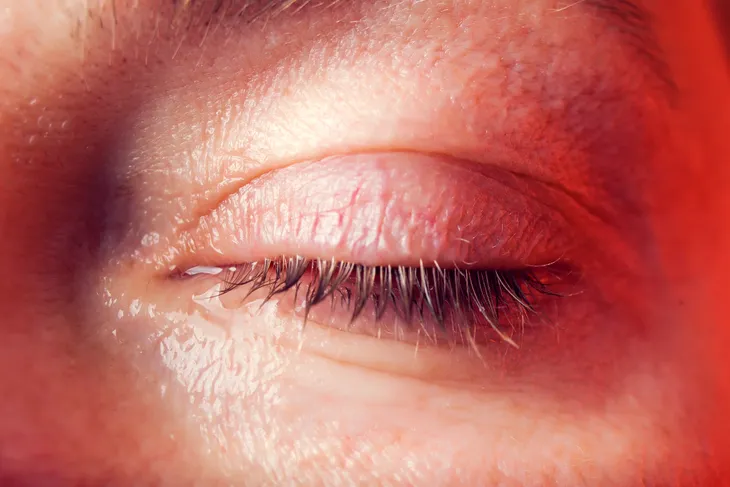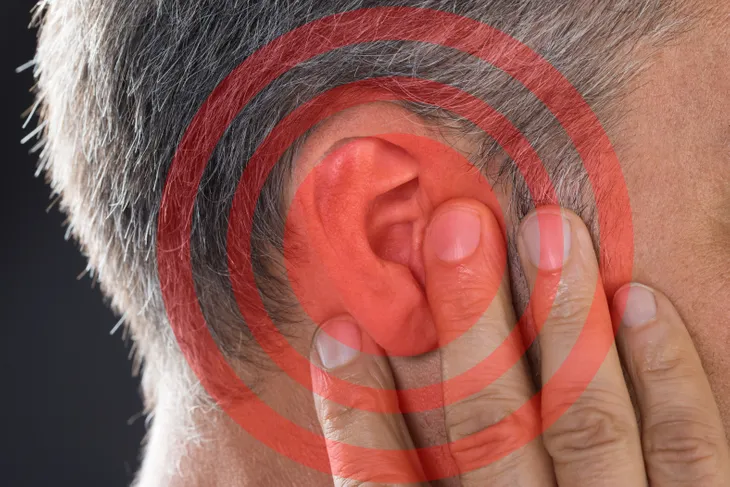You wake up on a morning like any other—make a pit stop in the bathroom, brush your teeth, rub your weary eyes and peer in the mirror only to notice that the left side of your face is slightly drooping. Now that you really focus, you notice your left eyelid is sagging as well. When you try to move or touch your face, you’re shocked to discover numbness with total muscle paralysis.
No, this isn’t a nightmare, you are experiencing Bell’s Palsy, a common form of facial paralysis that typically lasts a few months in duration. However, despite the temporary nature of the condition, the symptoms are pretty darn scary…
1. What is Bell’s Palsy?
Bell’s Palsy is characterized as the weakness or total paralysis or of the muscles on one side of your face. Bell’s palsy only strikes the left or right side of the face—not both sides at once.
Facial paralysis is caused by damage or injury to one of the two large facial nerves that branch out and control the muscles on either side of the face. Each nerve sends electronic impulses that trigger facial muscles, but with Bell’s palsy one nerve is paralyzed, which explains the dropping (or sagging) of muscles on one side of the face.
2. Bell’s Palsy Causes
Although the cause of Bell’s palsy can’t always be completely pinpointed, this common form of facial paralysis is believed to be the outcome of a viral infection (i.e., herpes), a virus lying dormant in the nerve (i.e., geniculate ganglion), or an immune system inflammatory response, which can all cause the swelling and immobilization of either facial nerve.
Bell’s palsy can strike both men and women at any age and of any ethnic background—resulting in roughly 30 out of 100,000 diagnoses annually. However, males around 40-years of age are among the most common patients. Females who are pregnant, of menstruating age, or either gender with a family history of former bout of Bell’s palsy are also prone to the condition.
3. Risk Factors for Bell’s Palsy
Even though the exact cause of Bell’s palsy remains disputed by medical professionals, several risk factors are believed to increase the chances of inflammation of either facial nerve, which results in paralysis.
For instance, patients with the type 1 herpes simplex virus (the form that causes cold sores) or another viral illness seem to have a greater risk of developing Bell’s palsy. Likewise, diabetes patients, pregnant women, and patients with a previous history of Bell’s palsy are considered the highest risk cases.
4. Taste and Saliva Production
Because Bell’s palsy strikes at one of the facial nerves, weakening the impulses and paralyzing the muscles on one side of the face, taste, tear production, and saliva production can be temporarily immobilized as well.
If the facial nerves that trigger tear and saliva production are affected, you may notice a lack of taste, the ability to shed tears, excessive tearing, or an uncomfortable case of dry eye. The facial nerves in either side of the face also have a hand in the taste responsiveness on the tongue. This can result in temporary drooling and lack of taste on one side of the tongue for up to a month.
5. Facial Paralysis
As mentioned, Bell’s palsy will impact the facial nerves on either the right or left side of the face, not both. As the nerves (made up of roughly 7000 different nerve fibers) swell and weaken, electrical impulses to the facial muscles become indiscernible and facial muscles suddenly lose the ability to move.
This facial paralysis typically (and quite frighteningly) occurs quickly overnight with patients awaking to discover complete muscle restriction, facial drooping, and mouth sagging on one side of the face. The eye on the same side may also be difficult to open and close. Remember, muscle paralysis will typically improve by itself within a few weeks to a month.
6. Sound Sensitivity
With Bell’s palsy, many patients complain of a increased sensitivity to sounds as well as a dull pain behind the ear, on the affected side of the face. Due to muscle paralysis and numbness, the ear on the affected side may suffer a noticeable auditory sensitivity.
Most commonly patients complain of increased sensitivity to sounds rather than a noticeable loss of hearing. This is most likely due to muscle numbness behind the ear on the affected side that can also reach the neck, jaw, and tongue.
7. Bell’s Palsy Diagnosis
In order to diagnose Bell’s palsy, your family doctor will ask you a series of questions about your symptoms accompanied by a thorough physical and neurological exam to examine the current function of your affected facial nerve and muscles.
Typically the sudden onset of facial paralysis on one side of the face is adequate to determine Bell’s palsy. However, your doctor may refer you to a neurologist or ear, nose, and throat specialist to exclude facial paralysis brought on by multiple sclerosis, a tumor, or Lyme disease.
8. Treating Bell’s Palsy
Approximately 85 percent of Bell’s palsy patients experience the gradual return of facial movement, taste, and tear and saliva production within three weeks time without any treatment necessary.
Your doctor will monitor you closely to ensure full movement returns within a month to 6-months to determine if you need anti-inflammatory steroids (i.e., prednisone) to help lessen the swelling of the facial nerve, antiviral medications (i.e., Zovirax or Valtrex) may be started within three days of Bell’s palsy symptoms and continued for seven days, and facial muscle massage and exercise to help restore mobility. As mentioned, the majority of Bell’s palsy cases fully recover without any treatment.











